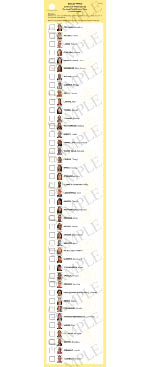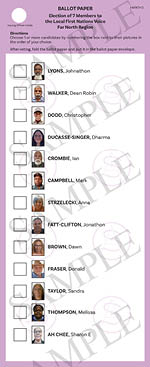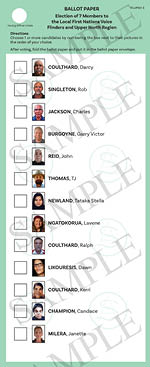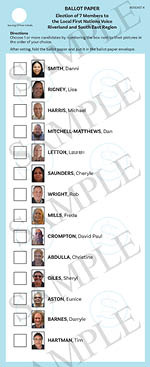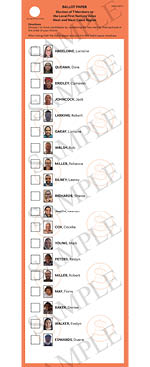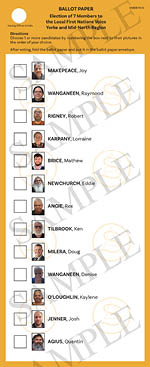The way to complete your ballot papers is different at each type of election in South Australia. On this page you can find instructions on how to complete your ballot paper correctly at each election.
State elections and by-elections
When voting in a state election you will be given 2 ballot papers: a small green paper for the House of Assembly, and a large white paper for the Legislative Council. At a by-election, you will just be given a green House of Assembly ballot paper.
House of Assembly
On the green House of Assembly ballot paper, you need to number every square in the order of your choice.
- Write the number 1 in the square next to the candidate who is your first choice
- Write the number 2 next to your second choice
- Continue by placing the numbers 3, 4, 5 and so on until you have a number in every square.
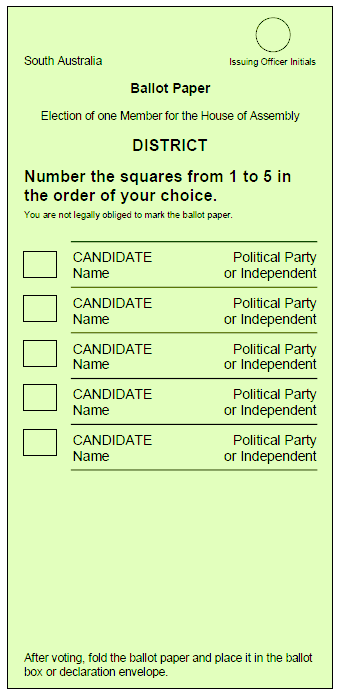
If you need assistance or make a mistake please see an electoral officer.
You can practice making a formal vote by using our interactive ballot paper below:
House of Assembly practice ballot paper >>
Legislative Council
On the white Legislative Council ballot paper, there are 2 ways you can vote. Either above the red line or below the line - but not both.
Vote above the red line:
If you choose to vote above the red line:
- Write the number 1 in the square next to the party or group of candidates which is your first choice.
- You can then write the number 2 next to your second choice, and so on for as many parties or groups of candidates as you like. You do not need to number every square.
- Leave the rest of the ballot paper blank. Do not mark below the red line.
By voting above the red line, your vote will go to the candidates within the group (or groups) you have chosen.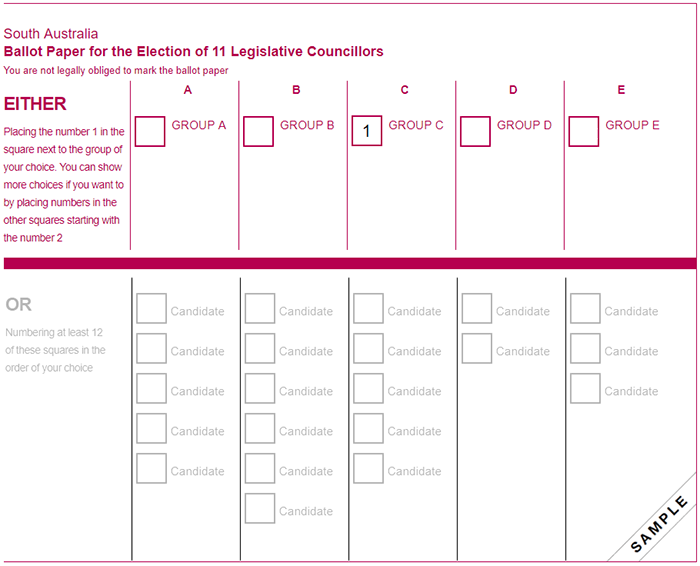
Vote below the red line:
If you choose to vote below the red line:
- Write the number 1 in the square next to the candidate who is your first choice.
- Continue by placing the numbers 2, 3, 4, 5, 6 in the squares next to the other candidates of your choice until you have chosen a minimum of 12 candidates.
- You may choose to continue numbering more than 12 candidates.
By voting below the red line, you are deciding the order of candidates according to your preferences.
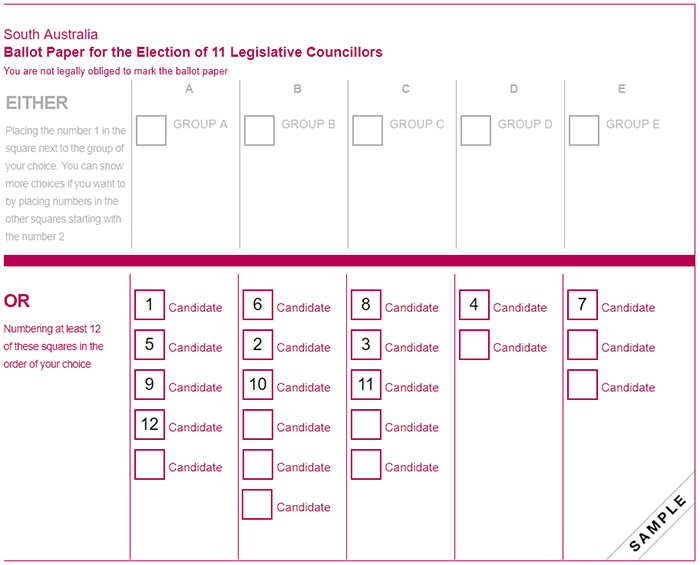
If you make a mistake, don't worry. Put a line through the mistake and write the correct information beside it, or you can ask an electoral officer for a replacement ballot paper.
You can practice making a formal vote by using our interactive ballot paper below:
Legislative Council practice ballot paper >>
First Nations Voice elections
When voting at a First Nations Voice election you will be given a ballot paper showing all the candidates for your region.
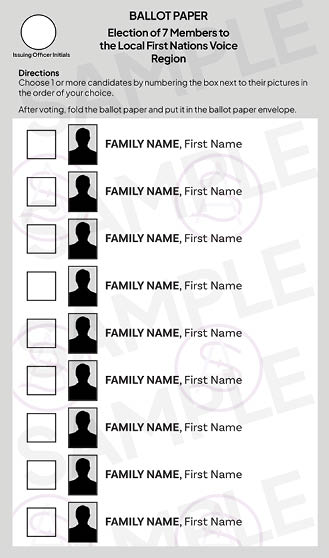
To vote, you must write a number 1 in the box next to the name and photo of the candidate who is your first choice.
If you want to, you can vote for more candidates. Write the number 2 in the box next to the candidate who is your second choice, the number 3 in the box next to the candidate who is your third choice and so on.
Continue on until you have voted for all the candidates you want to.
You don’t have to number every box.
Remember, it’s your choice how many candidates you vote for.
You don’t have to vote for more than 1 candidate, but your Local First Nations Voice will have 7 or 11 elected representatives, so it is a good idea to vote for multiple candidates to represent you.
If you only vote 1, your vote can only help 1 candidate to get elected. The more candidates you vote for, the more you can help your preferred candidates get elected.
To view and download a copy of the 2024 Local First Nations Voice election ballot papers, click on the pictures below.
| Sample ballot papers | ||
|
Central |
Far North |
Flinders & Upper North |
|
Riverland & South East |
West & West Coast |
Yorke & Mid-North |
More information
Download a copy of our easy read guide on voting at state elections (PDF, 1.5MB)
Download a copy of our easy read guide on voting in a by-election (PDF 2.64MB)

